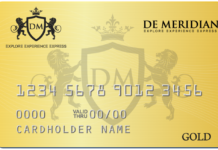You may feel as though your face looks a little too much like a blank canvas after giving yourself a near flawless complexion with the aid of foundation and concealer.
If you aren’t entirely incorrect, this blank canvas is the ideal canvas for a dusting of blush to add some much-needed color to your complexion.
Blush is intended to appear natural and healthy when added to the skin. Too much can make you seem clownish, and too little can make you look washed out.
Choosing the right blush color is important for any makeup look, whether you want to go for a natural or dramatic look.
However, with colors ranging from peach to plum, it’s easy to get confused about which ones would look better on you.
We’ve outlined how to choose the best blush color for your skin tone in the sections below, so you can achieve the most flattering flush as part of your next beauty look.
Find the Best Blush for your Complexion
The first move, similar to foundation, is to find a blush with similar undertones (warm, cold, or neutral) to your skin.
If you’re still uncertain, try matching the color of your mascara to the color of your lipstick.
To see if it ‘clashes’ with your normal lip color or lipstick, try it on the apples of your cheeks.
You should pick a different hue if it seems off or abnormal. After the base, bronzer, and even eye shadow, you can save blush for the last phase of the complexion makeup process.
It’s much easier to add than to subtract, so saving blush for last reduces the chance of having to scrub all off and start again if you added too much at the start.
It’s all about the blush recipe. If your skin is dry, a mineral or glowy blush is a better option for adding radiance.
If your skin is oily, stick to a matte blush to keep your cheeks looking less oily during the day.
It can take some trial and error to find your favorites among the multitude of different shades and formulations but think of it as a makeup-fueled adventure.
To be transparent, you can wear any blush color you want, and there are no hard and fast rules.
For Fair Skin Blush
Start light and build up the shade until you achieve the perfect look if you have a fair complexion. Soft pink, light coral, and peach are the perfect blush colors for fair/light skin.
Wear the soft pink shades for a natural look and the peach/coral shades for a splash of color if you have light skin tones with cool or pink undertones.
Wear the peachy coral shades for a natural look and the soft pink blushes for a splash of color if you have a light skin tone with warm or golden undertones.
- Baby Pink: This one is self-explanatory: Pale pink is the normal blush color for most people with fair skin, so it looks natural in product form. Baby pink gives a slight flush to fair skin.
- Peach: Peach blush is easy to apply and looks great on everyone. If your complexion has yellow undertones, peach is particularly flattering on fair skin. It improves the natural flush with its orange and yellow tones.
- Plum: Plum cheeks add a touch of drama to the look. Look for a transparent stain or cream in a plum hue that’s a step or two darker than your lips, with purple or blue undertones, if you have fair skin. This color is a bit of an overachiever, as it can also be used as a contouring shade on fair skin. Instead of a harsh, obvious line, dab a little plum blush in the hollows of your cheeks for extra definition and a nice shadow.
For Medium Skin Blush
Rich pink, soft mauve, and deep peach blush shades are ideal for those with a medium skin tone.
Wear the rich pink or mauve shades for a natural look and the deep peach shades for a splash of color if your undertones are cool or pink.
Wear the deep peach shades for a natural look and the rich pink or mauve blushes for a splash of color if you have warm or golden undertones.
The most popular skin tone is medium, which accounts for 80 percent of all females.
Apricot and berry blushes are the best for medium skin.
- Apricot: On medium skin tones, use the apricot shade to “sculpt the face and apply on the apples of the cheek to offer a slight dose of blush,” with the added benefit of brightening up any lingering summer tan.
- Berry: its common sense: if light pink looks good on pale skin, medium pink looks good on medium skin. You want something in the centre, rather than something with a lot of white. Pinky berry is a delicate, beautiful, and soft berry.
For Dark Skin Blush
Deep fuchsia, berry, warm brown, raisin, and tangerine blush shades look great on women with dark skin.
Wear Fuschia or light berry shades for a natural look and tangerine hues for a splash of color if you have cool or pink undertones.
Wear warm brown or tangerine shades for a natural look, and pinks and berries for a splash of color, whether you have warm or golden undertones.
- Brick Red: On dark skin, deep terra-cotta looks stunning. When dealing with dark skin, it’s vital to keep warm because it’ll look ashy if you’re too cold. As a result, brick resembles a redder version of a raisin. It appears to be a little more potent.
- Tangerine: Tiger lily, Becca’s fiery orange Shimmering Skin Perfector Luminous Blush, looks intense in the pan, but it’s the easiest way to get a real flush on dark skin. Bright orange looks subtle and pretty on dark skin, and oddly neutral.
How to Apply Blush
Tap off the excess with an angled blush brush, such as the Makeup Geek Blush Brush, by “flicking” the brush’s end with your finger.
This will remove any extra product from your brush and prevent you from adding too much to your cheeks.
Blend the color back toward the temple from the apple of your cheeks.
If you accidentally add too much, gently roll a beauty blender over your cheeks to suck up any excess pigment.











![How To Get A Ring Off a Swollen Finger [Update] How To Get A Ring Off a Swollen Finger](https://www.shopplax.com/wp-content/uploads/2024/01/How-to-get-a-ring-off-218x150.webp)
